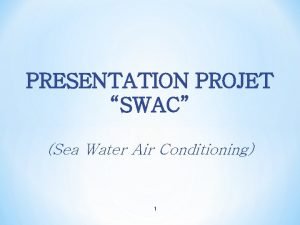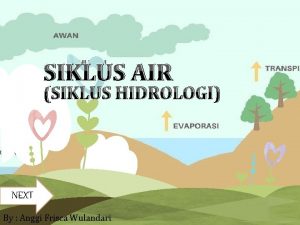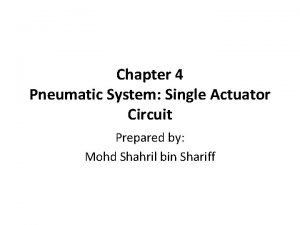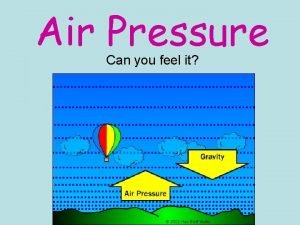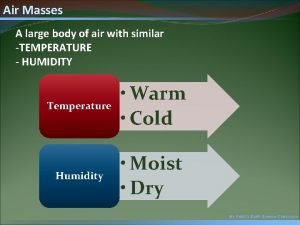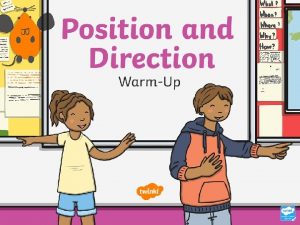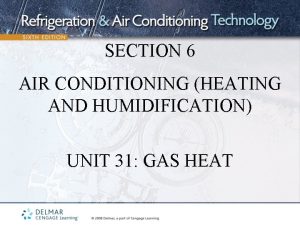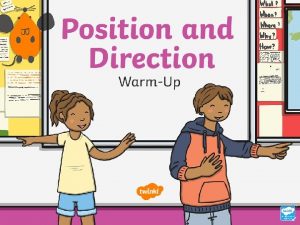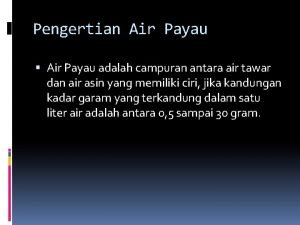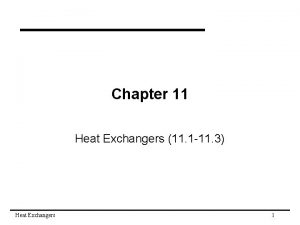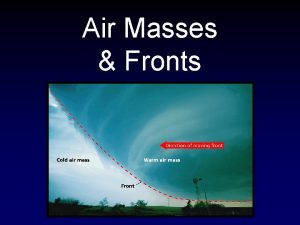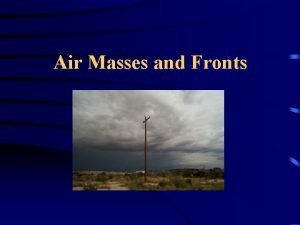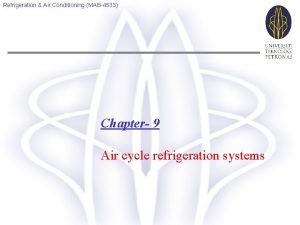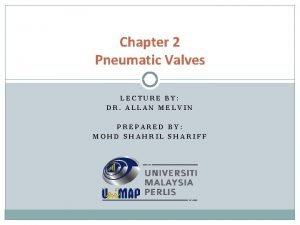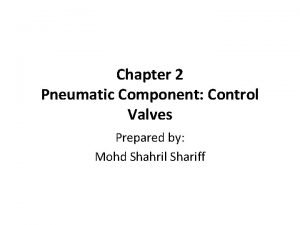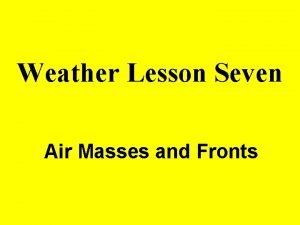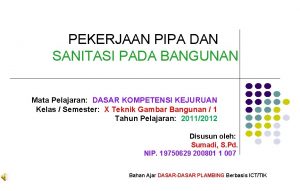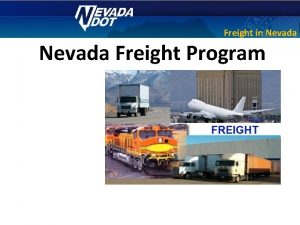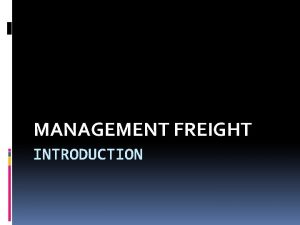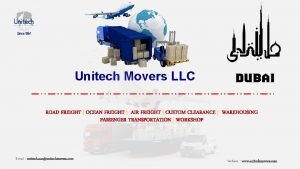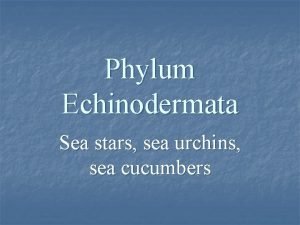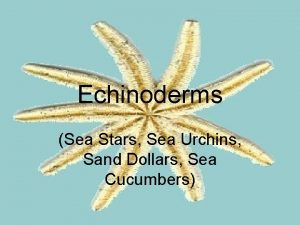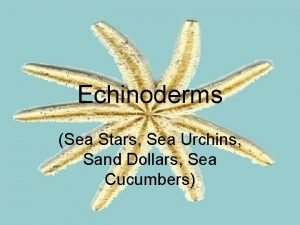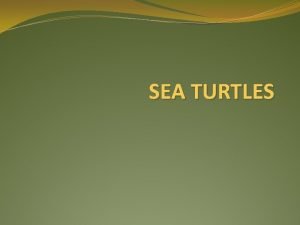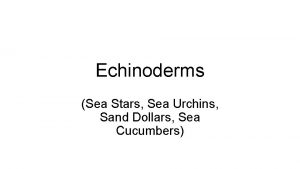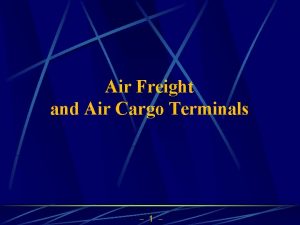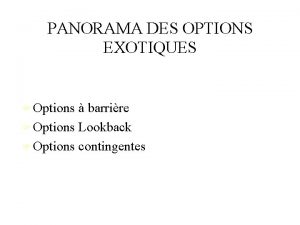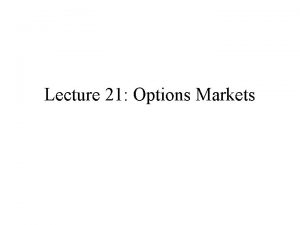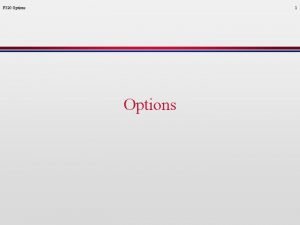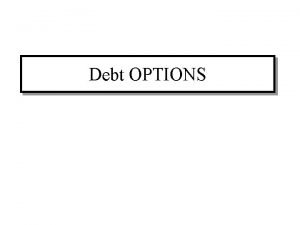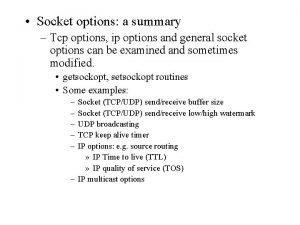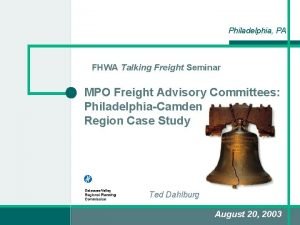WHAT ARE YOUR FREIGHT OPTIONS Air Freight Sea



![TRANSHIPMENT SERVICE Shanghai to Sydney Via Hong Kong [Cathay Pacific] Shanghai to Hongkong 2 TRANSHIPMENT SERVICE Shanghai to Sydney Via Hong Kong [Cathay Pacific] Shanghai to Hongkong 2](https://slidetodoc.com/presentation_image/f489dc144a38f0d407c37d1ced0fa705/image-4.jpg)





























- Slides: 33

WHAT ARE YOUR FREIGHT OPTIONS? Air Freight Sea Freight q Direct Service q Transhipment Service q Courier Service q Full Container Load (FCL) o Direct o Transhipment q Less Than Container Load (LCL)

When to Use Air Freight q Value of your goods o I-pads vs. Plasticware q Stock Cycles o How quickly are they selling? q Size of your Shipment o Under 50 – 100 kgs? q Timing o I need this in a hurry.

Direct Services Shanghai to Sydney Direct Carriers Flying Time of 11 hours
![TRANSHIPMENT SERVICE Shanghai to Sydney Via Hong Kong Cathay Pacific Shanghai to Hongkong 2 TRANSHIPMENT SERVICE Shanghai to Sydney Via Hong Kong [Cathay Pacific] Shanghai to Hongkong 2](https://slidetodoc.com/presentation_image/f489dc144a38f0d407c37d1ced0fa705/image-4.jpg)
TRANSHIPMENT SERVICE Shanghai to Sydney Via Hong Kong [Cathay Pacific] Shanghai to Hongkong 2 hrs 30 mins Hongkong to Sydney 9 hrs 20 mins = 11 hours 50 mins ? ? ?

Air Freight Transit Times q Direct Flights o Hongkong o Shanghai o Beijing 9 -10 hours 10 -11 hours 12 -14 hours q Transhipment o 2 -3 days o Can be longer in Peak Season with backlogs

Direct Versus Transhipment Direct Service Transhipment Service q Guaranteed to arrive when loaded q Cheaper than direct service q Quickest possible transit time q Slower transit time q More expensive freight cost q Possibility of getting stuck in transhipment port [especially during peak season]

FREIGHT COSTS OVERSEAS CHARGES q Inland Freight q Export Customs q Documentation q X-ray/Security Screening q Airport Terminal Fees q Air Freight q Fuel Surcharge q Security Surcharge LOCAL CHARGES q Airport Terminal Fees q Breakbulk Charges q Documentation q Air Cargo Automation q Customs Clearance q Delivery q Fuel Surcharge

DIRECT VERSUS TRANSHIPMENT DIRECT SERVICE q Fastest possible transit time q Guaranteed to arrive when loaded q Usually more expensive option q Less Handling – Less Risk TRANSHIPMENT SERVICE q Container transferred from one vessel to another q Sometimes, your only option q Potential for delays during Peak Season q Longer transit time q Cheaper price ?

SEA FREIGHT TRANSIT TIMES q Direct Services o Hong Kong / Shekou / Nansha o Shanghai / Ningbo / Xiamen q o o o Transhipment Services Huangpu / Shantou Tianjin / Dalian Hong Kong/ Shanghai Via Shekou Via Busan Via Singapore 10 -12 days 14 -16 days 24 -28 days 20 -25 days

Freight Calculations F. C. L Cargo q Freight charges are paid based on size of container – o Per 20 Ft Container o Per 40 Ft Container L. C. L Cargo q L. C. L Cargo is charged per – o Cubic Meter o 1, 000 Kgs q Whatever is the greater.

Freight Costs Overseas Charges • • Inland Freight Export Customs Documentation Bill of Landing Fee Terminal Handling Charge Ocean Freight Bunker Surcharge Local Charges • • Port Charge Terminal Handling Charge Sea Cargo Automation Delivery Order Fee Terminal Security Fee Customs Clearance Delivery

Overloading Containers • Overloading container is illegal & extremely dangerous. • Average guide for container + goods is 23. 5 tonnes • R. T. A sits outside gate at Port Botany to check trucks • R. T. A works off axle weights. • Important that load is evenly distributed in the container.

Weight Distribution In Container q Incorrect load distribution. q Load not evenly distributed.

Weight Distribution In Container q Correct load distribution q Load evenly distributed

WAREHOUSING AND LOGISTICS

OPTIONS FOR NEW IMPORTER q. Start your own warehouse. q. Rent space in existing warehouse. q. Outsource to 3 PL company. q. Just-in-time Delivery Model

YOUR OWN WAREHOUSE PROs CONs q Master of your own destiny. q Tied to a lease. q Handle goods way you want to. q Additional costs – forklifts, pallet hire, labour, etc. q Extra care – minimise damage q Higher insurance premiums q Provide most flexible service to your end-customer. q OH&S / Workcover compliance

RENT SPACE PROs CONs • All the “PROs” of your own warehouse • Some of the “CONs” of your own warehouse • Possible sharing of costs – forklift, labour, etc. • Difficulty in finding right situation • Potential to take over more space as business grows. • Conflict with resources

3 rd PARTY LOGISTICS PROVIDER PROs • Most cost-effective for startup operation. CONs • Lose control of your cargo • No lease or equipment costs. • Less flexibility in servicing your customers • No OH&S/Workcover compliance issues. • Increased risk of damage or loss • Piggyback on existing distribution services. • Increased risk of error?

Just-In-Time (Cross Docking) PROs • No warehouse, labour, or equipment costs. • Less handling = less cost in your supply chain. • Most cost-effective model. CONs • Least flexible model. • No stock on hand for emergencies. • Need accurate usage forecasts from your customers.

TRANSIT TIMES TO PERTH PROs CONs • Air • 5 -6 hours • Truck • 4 -5 days • Rail • 8 -10 days • Ship • 12 -14 days

DOMESTIC AIR FREIGHT q Can be very expensive compared to international air freight. q Less options, less competitors. q Mainly serviced by narrow-body aircraft. q Only used in emergencies or for high-value cargo q Rates charged on “per kg” basis q Beware volume/weight ratio.

TRUCKING q Most common form of domestic contribution. q Good balance between price, speed, and flexibility. q Plenty of operators and competition q Rates charged on “per kg” basis q Weight/volume ratio either 1 cbm : 333 kgs or 1 cbm per 250 kgs q Pallet rates can be obtained for regular business on mainline routes e. g. Sydney / Melbourne.

RAIL q Mainly used for long haul. q More cost effective than trucking q Suitable for large loads i. e. rail containers q Container rates based on weight ---- heavy containers cost more. q Have to get container to rail yard at origin. q Have to collect container from rail yard at destination.

COASTAL SHIPPING q Only suitable for full-container loads q Only viable for long haul e. g. Sydney – Fremantle q Cheapest way to ship goods to western Australia q Still have to deliver container to terminal. q Still have to pick up container on arrival q Container rates charged same as international shipping i. e. per 20 ft/40 ft high cube.


INSURANCE

INSURANCE q Should I take out marine insurance for my cargo? YES q Should I let my supplier take out marine insurance on my behalf? NO q Are marine insurance premiums cheaper in Australia? Usually, YES q Will I have less problems if I insure from Australia? YES


AUSTRALIAN INSURANCE CUSTOMS AND QUARANTINE

BASIC QUESTIONS PRE-IMPORT 1. 2. 3. 4. 5. 6. 7. 8. Is the commodity prohibited from importation into Australia? Are there any restrictions from importation into Australia? Are there any Australian Quarantine restrictions or prohibitions? Does my commodity need any special treatment/s prior to import? Do I have packing that requires treatment prior to import? Do I have all the required documentation / paperwork? Is the documentation/paperwork accurate? If FCL container: does the combined weight comply with the relevant state transport requirements?

TREATMENT REQUIREMENTS FOR SEA CARGO q Wooden packaging utilized in in FCL/LCL consignments should be treated using any of the options available for wooden packing. q Such consignments must be accompanied by an acceptable Treatment Certificate. The acceptable methods of treatment are: • Fumigation • Heat Treatment • Permanent Immunisation Treatment q Treatment Certificates are not required for: • New Processed panel product • Timer treated and marked in compliance with IPSM 15

Questions and Answers q What happens if my goods are not accompanied by a packing declaration? A: If a valid packing declaration does not accompany a sea consignment, the consignment will be directed to AQIS for an inspection to verify whether or not wood packing and/or and straw are present. q What happens if timber packing is not treated when they arrive in Australia? A: If a valid treatment certificate does not accompany a sea consignment, the consignment will be directed for treatment, destruction, or re-export of the packing material from Australia.
 Insidan region jh
Insidan region jh Hubungan air dengan tanah
Hubungan air dengan tanah Troy aegean sea
Troy aegean sea What is asias largest desert
What is asias largest desert Sea anemone jellyfish
Sea anemone jellyfish Marlin symbolism
Marlin symbolism Sea cave
Sea cave How does the air move in a sea breeze?
How does the air move in a sea breeze? Sea water air conditioning
Sea water air conditioning Give us your hungry your tired your poor
Give us your hungry your tired your poor I could sing of your love
I could sing of your love Air hujan sanggup menjadi air tanah lantaran proses … *
Air hujan sanggup menjadi air tanah lantaran proses … * Contoh pelarut anorganik adalah
Contoh pelarut anorganik adalah Direct control of single acting cylinder
Direct control of single acting cylinder Chapter 12 section 1 what causes air pollution
Chapter 12 section 1 what causes air pollution Can you feel it in the air in the air
Can you feel it in the air in the air A large body of air
A large body of air Two cold air masses converge on a warm air mass
Two cold air masses converge on a warm air mass Put your right hand in the air
Put your right hand in the air Segala macam bentuk
Segala macam bentuk Is methane lighter than air
Is methane lighter than air Right hand in the air left hand in the air
Right hand in the air left hand in the air Pengertian perairan payau adalah
Pengertian perairan payau adalah Steam condenser heat exchanger
Steam condenser heat exchanger Air masses & frontswhat is an air mass?
Air masses & frontswhat is an air mass? Air masses & frontswhat is an air mass?
Air masses & frontswhat is an air mass? Cop of reversed brayton cycle
Cop of reversed brayton cycle Pneumatic time delay valve symbol
Pneumatic time delay valve symbol Supply air throttling
Supply air throttling Air masses & frontswhat is an air mass?
Air masses & frontswhat is an air mass? Measures air temperature
Measures air temperature Penempatan bak kontrol
Penempatan bak kontrol A swirling center of low air pressure is called
A swirling center of low air pressure is called Chapter 12 air section 1 what causes air pollution
Chapter 12 air section 1 what causes air pollution








